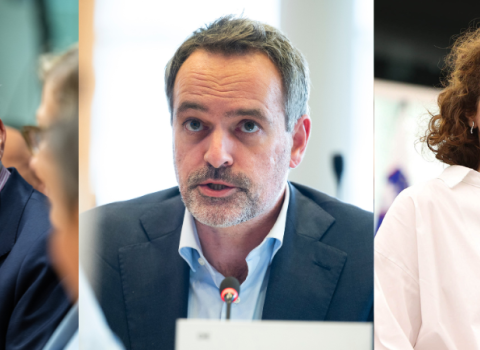Investments in lower-cost, greener buildings will help universities balance their budgets and contribute to the EU’s overarching plan to become carbon neutral by 2050

Virginie Dupont, vice president of the Conference of University Presidents (CPU). Photo: Institut Universitaire Européen de la Mer website
As of today, 22 EU member states have submitted national plans for their share of the EU’s pandemic recovery fund, with a number looking for money to modernise university campuses, reducing the energy footprint and cutting maintenance costs.
The recovery fund prioritises project that promote the green transition and digitalisation. The money needs to be spent over the next four years, meaning universities that have already drawn up improvement plans which fit these priorities stand to benefit the most from the €800 billion Recovery and Resilience Facility, the key instrument in the EU plan for emerging stronger from the COVID-19 pandemic.
Virginie Dupont, vice president of the Conference of University Presidents (CPU) in France, said most of the country’s campus buildings are ageing and need energy-saving upgrades. “CPU has calculated that over €4 billion will be needed to renovate universities [in France],” Dupont told an online conference organised by the European University Association (EUA) last week.
Universities want to invest in new heating and cooling systems, better insulated facades and charging stations for electric vehicles, in order to reduce maintenance costs. “[The recovery fund] is really a blessing, because the energy savings that will be achieved will allow the balancing of university budgets,” Dupont said.
Improving the overall energy performance of campuses will contribute to the EU’s overarching plan to become carbon neutral by 2050.
In Italy, the government has allocated €15 billion from its pandemic recovery plan to universities. “It's almost the double the national annual budget from the ministry to the universities,” noted Maurizio Tira, rector of the University of Brescia.
The Italian government previously allocated €1.5 billion from the national budget to infrastructure and modernisation projects in universities, but the recovery fund will boost that and help finance retrofitting and renovation projects. “This is something that is radically changing the trend that we were following in the last few years, and even decades,” said Tira.
Elsewhere, universities are not so happy with what their governments have allocated for higher education in the pandemic recovery fund.
Romania’s national plan, the most recent to land on the European Commission’s desk, puts too much focus on building roads and other infrastructure projects, in the view of Daniel David, rector of Babeș-Bolyai, Romania’s largest university.
The European Commission sent back the first draft of Romania’s plan because it lacked sufficient focus on the transition towards a green and digital economy. In the revised plan, the government has requested €14.3 billion in grants and €15 billion in loans. An early draft allocated €2 billion for universities and research, a figure which later shrank to €500 million.
“The country has many problems, but now it was the time to fix education,” David told Science|Business. His university submitted six projects that he says would help Babeș-Bolyai revamp its campus and set it on a course to compete with world class institutions in the fields of biotech, healthcare and nanotechnology. Currently, it’s unclear how many of these projects will be funded.
Avoid a new funding slump
Universities also hope the recovery money will insulate them from the worst effects of a pandemic-generated economic crisis, which is likely to hit the sector in the medium to long term, tightening national R&D budgets in Europe.
In the latest edition of its Public Funding Observatory, EUA notes that some higher education systems in Europe have yet to fully recover from the funding slump following the 2008 financial crisis. The impact of budget cuts made after 2008 is still felt in many countries.
The COVID-19 pandemic may have raised political awareness of the economic significance of investments in science, but not all governments are putting their money where their mouth is. “[Science] is starting to be recognised more and more, but it's not sufficiently being translated into actual funding decisions,” said Ondřej Hradil, research infrastructures manager at Masaryk University in the Czech Republic.
Masaryk University is drafting a research infrastructure strategy that prioritises research fields which need investment in new equipment and labs. As universities in central and eastern Europe aim to increase their competitiveness and to do more leading edge research, they need well equipped facilities and the most advanced equipment.
“People start to understand that if they want to do cutting edge research, you need to invest into many more technologies than was the case a couple of years ago, or ten years ago,” said Hradil.
Academics recognise there is increasing pressure on public finances, but governments have to make up their minds and decide what the priorities are. “The question is, what will be the political choices in different countries?” said Hradil. “Will the choice be to invest more into the future generation and research, or not?”





 A unique international forum for public research organisations and companies to connect their external engagement with strategic interests around their R&D system.
A unique international forum for public research organisations and companies to connect their external engagement with strategic interests around their R&D system.